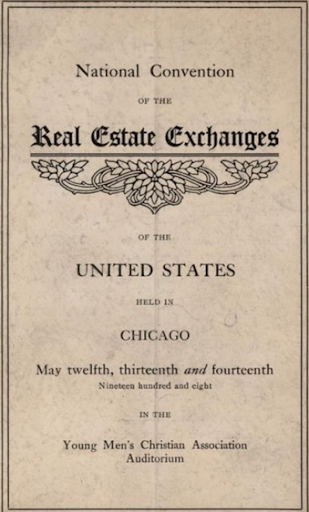 As a consultant, I have had the opportunity to be invited to nations across the globe to explain how real estate operates in America. For most of the world, real estate firms sell the inventory that they have. Shoppers are often unrepresented and finding property is a process of dredging advertising media. America offers the most transparent and easily navigable real estate market in the world.
As a consultant, I have had the opportunity to be invited to nations across the globe to explain how real estate operates in America. For most of the world, real estate firms sell the inventory that they have. Shoppers are often unrepresented and finding property is a process of dredging advertising media. America offers the most transparent and easily navigable real estate market in the world.
Interestingly enough, the roots of our transparent system are buried in pocket listings. Folks selling property would have meetups and share the homes they were selling. The ancestors of Steve Baird and NP Dodge were among those pioneers who formed the first real estate companies in 1855, and whose legacy stands tall today.
The National Association of REALTORS® was founded in Chicago in 1908 by 120 founding members. The first convention was called the National Convention of Real Estate Exchanges. It looks to me like the original name of NAR was the National Association of Real Estate Exchanges.
Deep in the heart of all global enterprise is the collective effort to support one another in the advancement of a chosen profession. The system of apprenticeship was first developed in the latter middle ages and came to be supervised by craft guilds and town governments. The National Association of REALTORS® is the largest professional guild of its type, anywhere.
Through the natural discourse of meetings to hone the best practices of the trade, the association created rules. To be a member of NAR or any association, members must agree to adhere to the rules. These association rules are creating legal problems.
In Sitzer-Burnet, the jury ruled that the participation in an organization with rules that required buyer compensation was enough to infer a conspiracy without any evidentiary facts beyond parallel conduct. It has been explained to me that the judge instructed the jury to rule on a per se violation of the Sherman Act – price fixing, bid-rigging, horizontal customer allocation, and territorial allocation agreements require no evidence of actual effect on the market or the intentions of those engaged in the practice. Basically, the plaintiffs in Sitzer-Burnet only needed to prove that the defendants were part of an association, and that rule regarding the offer of compensation is anti-competitive.
To be clear, it is not an antitrust violation for competitors to act in parallel by charging similar prices. By itself, parallel conduct does not show concerted action, because the competitors might have been making their parallel decisions independently.
Were competitors making their parallel decision independently? From my viewpoint, the listing broker set the offer of compensation for the buyer’s broker without any influence from the buyer’s broker. The rule refers to the offer of compensation as unilateral, and is indiscriminate. The MLS data on the offer of compensation does show that the commission offered by the seller is variable, but the offer is usually pretty parallel – ranging from 2% to 3% most of the time.
Let’s dig a little deeper
I have written about this before, and am doing it again. The litigants have not looked at the commission net sheet. All practitioners know and experience that the offer of compensation in the MLS is quite frequently negotiated between the time that an offer has been accepted, and the closing of the transaction. The accepted offer triggers an inspection which – almost every time – finds issues with the used home. Sometimes they are minor, like a leaky faucet. Sometimes inspections find significant problems, like a faulty roof or foundation. The agents negotiate buyer concessions to remedy these issues and often the brokers will cut their commission to participate in the remedy.
Litigation may unravel the Association and the MLS
 The core of the REALTOR® association and the multiple listing service are their participation rules. It is going to take many years of litigation to determine if the jury in the Sitzer-Burnet case – and all of the similar cases – will hold under appeal. I do not believe that the judge and jury got it right. But, if this case holds on appeal, the cooperation between competitors in our current state of Association/MLS will unravel. If brokers are unilaterally guilty of antitrust behavior by joining NAR or participating in the MLS, they will need to walk away.
The core of the REALTOR® association and the multiple listing service are their participation rules. It is going to take many years of litigation to determine if the jury in the Sitzer-Burnet case – and all of the similar cases – will hold under appeal. I do not believe that the judge and jury got it right. But, if this case holds on appeal, the cooperation between competitors in our current state of Association/MLS will unravel. If brokers are unilaterally guilty of antitrust behavior by joining NAR or participating in the MLS, they will need to walk away.
I believe that this is a “rule of reason” antitrust case. Simply stated, the courts have determined that if anti-competitive harm is outweighed by the pro-competitive effects, the practice is not unlawful. I am an advocate of the pro-competitive and pro-consumer benefits of the REALTOR® association and the multiple listing service. Sadly, the Sitzer-Burnet jury was not asked to consider this. So there is hope. Moreover, many states have laws and regulations support the current offer of compensation scheme.
Brainstorm
I wonder why all of our real estate forms for buyer and seller representation do not have language about antitrust, and do not opt-out of class action lawsuits. Seems like that should be added to these agreements right away. And buyer agency agreements should imply that if the seller does not pay the buyer’s agent commission, the buyer will. Buyer offer-submission can include a price for the home and a commission for the buyer. Listing agreements already permit the offer of compensation, perhaps the language needs to be stronger. Eliminate the offer of compensation field entirely from the MLS system. Require a buyer representation agreement submission before showings. Inform the seller of the buyer-agent compensation request with the offer presentation.
I would hate to see the REALTOR® association and MLSs be eliminated by this litigation. The industry is in the first inning of this contest, and we are down. The daily announcement of additional litigation presents a frightening line up. Never before has the industry had a more compelling reason to collaborate. The industry’s greatest strength is their numbers – 1.5 million members strong, over 106,000 brokerages, and nearly 500 MLSs.




